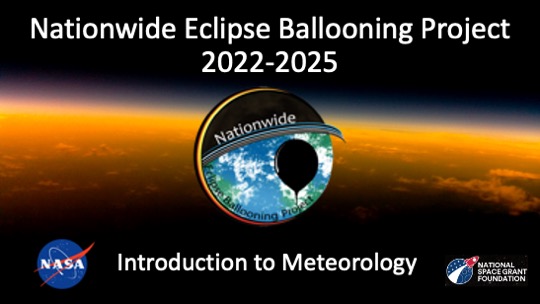Atmospheric Science Lesson 6: Meteorology for ballooning, and the Weather Research and Forecasting Model (WRF)
Overview of the content
This lesson includes an introduction to meteorology topics, including
- Basic meteorological variables
- Layers of the atmosphere
- How clouds form
- Synoptic-scale features
- Energy transfer methods and Earth's energy budget
- Introduction to the boundary layer
In addition this lesson covers WRF (typically pronounced as "wharf") - the Weather Research and Forecasting Model
Learning objectives
After completing this lesson, students will be able to:
- Define the layers of the earth's atmosphere and identify the layers in which high altitude balloons operate.
- Explain the general trends in winds at each layer of the lower atmosphere.
- Identify weather that can negativly impact ballooning.
- Identify multiple sources of weather information that is apporpriate for balloon flight planning.
- Understand the basics of WRF - which the Atmospheric Science Leadership Team experts used to create the historic flight predictions that we'll use to find campaign locations.
Video content
Introduction to Meteorology - Video by Genevieve Picciano, Plymouth State University [YouTube, 13:54]
This presentation covers:
- Basic meteorological variables
- Layers of the atmosphere
- How clouds form
- Synoptic-scale features
- High and low pressure systems
- Troughs and ridges
- Fronts
- Jet stream
- Airmasses
- Energy transfer methods and Earth’s energy budget
- Introduction to the boundary layer
You can also view or download the slide deck

Introduction to WRF (Weather Research and Forecasting Model) - Video by Carl Spangrude [YouTube, 1:11:48]
The Weather Research & Forecast model (WRF) is:
- A Numerical Weather Prediction model
- Freely available for community use
- Suitable for many disciplines (chemistry, hydrology, fire science, meteorology...)
- Developed by NCAR, NOAA, FAA and others
You can also view or download the slide deck
![]() Don't forget to track today's progress in your portfolio
Don't forget to track today's progress in your portfolio
Will you take a few minutes to give us some feedback on this lesson? Thank you!

